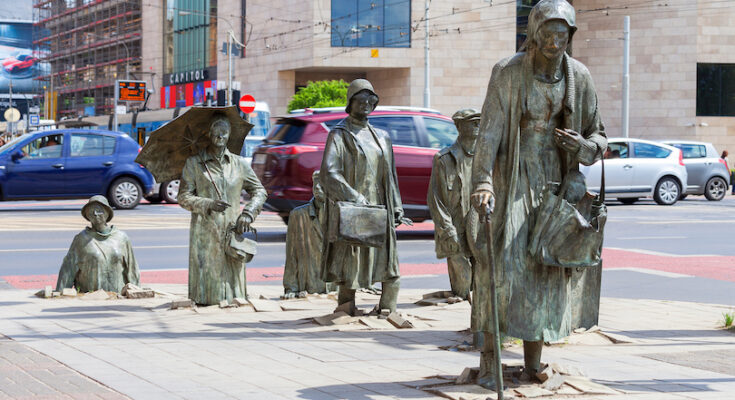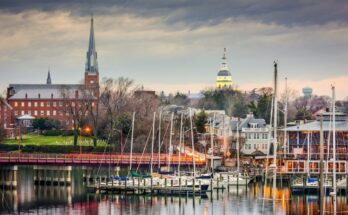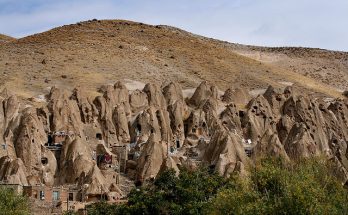Understated, historic, and inviting. Wroclaw is a city with everything but a spot on the proverbial map. Any traveler stuck in the rut of visiting the classics, the overworked destinations filled with the opinions of others, will revel in the exploratory freedoms of Wroclaw.
There is much magic in the mystery, a thousand-year tale that unfolds before you. Under the reigns of various kingdoms, from Bohemia to Prussia, there’s a delightful mix-match of architecture. Some from centuries past, others rebuilt from the scourge of WWII.
Travelers with keen ears will detect the sounds of German throughout the city as the scents of Silesian dumplings and bigos stew welcome you into cozy restaurants. Here you can watch the cobbled streets shimmer under the lampposts.
A convenient way to explore all the things to do in Wroclaw is by bike. Between April and November you can rent bicycles at about 70 locations throughout the city with the Wroclaw City Bike.
In this post, we’ll cover:
17. Hansel and Gretel Houses
Bring one of the most iconic fairy tales to life as you visit the enchanting Hansel and Gretel Houses. These two charming structures, linked by an arch, grace one of the corners of the market square, establishing themselves as iconic symbols of the city.
Fondly named after characters from a fairy tale by the local citizens, these buildings mark a notable intersection. This passage not only guides visitors to the Church of St. Elizabeth but also serves as an entrance to the whimsical world of the Wrocław dwarfs.
Romantics often interpret the archway between the two houses as a symbolic gesture, seeing it as a representation of holding hands or signifying a bond of being together forever.
16. Sky Tower Observation Deck

Standing proudly at a height of 212 meters, The Sky Tower Observation Deck provides visitors with mesmerizing panoramas of Wroclaw and its surroundings. As the city’s tallest structure, its modern and sleek design stands in stark contrast to Wroclaw’s traditional architecture, making it an essential stop for tourists in search of a unique and captivating experience.
Upon entry, a team of welcoming staff is ready to guide you to the elevator—an experience in itself, as it zooms upwards at a speed of 6 meters per second. Upon reaching the summit, stepping onto the observation deck unveils breathtaking 360-degree views of Wroclaw and its expansive landscape. On clear days, the vista stretches as far as Mt. Ślęża. Weather permitting, Chełmiec and Śnieżka also come into view on the horizon.
15. Hydropolis

Situated within a captivating former reservoir, Hydropolis proudly stands as the world’s first underground water museum. Here, you can transport yourself into a fascinating world of water exploration, carefully divided into seven distinct zones. Each zone delves into various facets of water, from its natural significance to its technological applications.
A true highlight within Hydropolis is its exquisite 3D cinema, where cutting-edge technology unfolds a visually stunning journey through the world of water. This immersive cinematic experience not only underscores the importance of water in our lives but also sheds light on the environmental impact of human activities.
The museum’s charm lies in its interactive exhibits, offering delightful multimedia games where visitors can play with dolphins and take part in coral reef cleaning—an engaging and educational experience, especially appealing to families.
14. National Museum

Renowned as one of Poland’s largest and most significant museums, the National Museum in Wrocław resides on the southern bank of the Odra River. Constructed in the Northern Neo-Renaissance style between 1883 and 1886, the museum’s picturesque location serves as a backdrop for its impressive collection.
The National Museum is home to 200,000 artifacts across various artistic disciplines, from medieval Silesian sculptures to contemporary prints. The collection also encompasses Silesian, Polish, and European paintings. Additionally, the museum features a diverse array of historical artifacts spanning the Middle Ages to the early 20th century, complemented by a rich library of books and documents.
Through ongoing acquisitions, including paintings, prints, sculptures, and artistic crafts, the National Museum in Wrocław continues to expand its already extensive and diverse collection. Thus solidifying its status as one of Poland’s most prominent cultural institutions.
13. St. Elizabeth’s Church

Standing as one of the oldest and tallest structures in the Old Town of Wrocław, St Elizabeth’s Church has an unmistakable presence that can be traced back to the 12th century. Despite enduring challenges such as hail damage in 1529, severe destruction in WWII, and a mysterious fire in 1976, the church perseveres.
Today, it serves as a military garrison church, showcasing memorable Gothic and Renaissance altars, along with housing over 100 tombs of noteworthy citizens. The highlight, however, is the 91m tower. Open to visitors from April to the end of October, it offers a spectacular panoramic view for a small fee. Don’t be deterred by the climb, it’s a view well worth the effort.
12. Wroclaw Zoo

A magnetic destination for both animal enthusiasts and families, Wroclaw Zoo offers an unparalleled experience. Holding the title of the largest zoo in Poland and among the top zoos in Europe, it hosts over 10,000 animals, from over 1,300 species.
A must-see is Afrykarium. Its guiding concept revolves around the theme “Life-giving waters of Africa,” offering an immersive presentation of various aquatic ecosystems found on the continent. It holds the distinction of being the only European facility exclusively devoted to showcasing the rich fauna and flora of Africa.
The centerpiece of this section is the underwater tunnel, providing a unique experience of walking on the ocean floor, surrounded by a spectacular display of sea creatures.
11. Tumski Bridge

Stretching across the Odra River amidst picturesque architecture, Tumski Bridge is just for those getting about on two feet. The tranquil pathway places you among the locals for a peaceful stroll surrounded by Wroclaw’s breathtaking architecture.
As you make your way across the bridge, you will come across many love locks attached to the railings. This is a custom that originated in the early 2000s. According to legend, couples who place a lock on the bridge and throw the key into the river will ensure the lasting strength of their love. This heartwarming sight only adds to the romantic atmosphere of the bridge.
Located across Tumski Bridge, Sand Island is home to the grandeur of Wroclaw’s largest Gothic church, the Church of Our Lady on the Sand. This captivating church stands as an impressive landmark on the quaint island.
10. Monument to the Anonymous Passerby

Sitting on both sides of Świdnicka Street, The Monument to Anonymous Pedestrian offers a humbling and emotional experience. It prompts reflection on the significance of honoring those who have suffered and lost their lives in times of war and conflict.
Comprising fourteen natural-size bronze figures, the monument depicts various ordinary passersby, such as a mother with a child, an old woman with a cane, and a man with a suitcase. Walking in different directions, with their faces covered by hoods, as the figures approach the road’s edge, they gradually sink into the ground.
Unveiled on the night of December 12th, 2005, marking the 24th anniversary of martial law, the monument symbolizes the transformative changes in Poland.
9. St Mary Magdalene Church

With origins tracing back to the 13th century, St. Mary Magdalene Church is a testament to Wroclaw’s rich religious and cultural history. This monumental church underwent a transformative period during the Reformation when it was taken over by Protestants. It was only after World War II that it was restored to its original status.
The church boasts notable features, including a 12th-century Romanesque portal relocated from the Benedictine Abbey, a prized relic from Wrocław’s past. The distinctive ‘Penitents’ Bridge’ connects the two lofty towers, their cupolas left unreplaced after the war.
Climbing the tower rewards you with thrilling views of the Old Town, and traversing the open-air bridge 46m above ground adds an exhilarating dimension to the experience. Though the ascent is steep, the panoramic vista of the city allows for great photography.
8. Botanical Garden

Renowned as a serene oasis, the Botanical Garden of the University of Wrocław is not just a “living museum” but also serves as a scientific and educational hub.
A particular highlight is the arboretum, a dedicated section showcasing an impressive array of tree species, ranging from towering oaks to delicate shrubs. As you wander through, take a moment to absorb the significance of preserving and protecting these trees for the benefit of future generations.
Beyond its green landscapes, the Botanical Garden hosts a myriad of events, including Majówki Tumskie and the Festival of Pumpkins. Concerts, open-air events for children, and gatherings for gardening enthusiasts further contribute to its vibrant atmosphere.
7. Multimedia Fountain at Pergola

Nestled in the picturesque Szczytnicki Park, the Multimedia Fountain at Pergola presents a mesmerizing spectacle for visitors to the former regional capital.
Featuring a basin adorned with 300 water jets that craft geysers, mists, and various intricate shapes, the water installation harmoniously dances with 800 lights. The seamless blend of light, water, and music produces breathtaking shows, enhanced during special night displays with animations, photos, and films projected onto the water.
Unveiled on June 4, 2009, in celebration of the 20th anniversary of free elections in post-war Poland, this captivating fountain serves as a heartfelt gift to the city’s residents.
6. Kolejkowo

Dubbed the “Miniature World of Trains,” Kolejkowo stands as an exciting and distinctive destination, offering visitors an extraordinary glimpse into a meticulously crafted miniature version of the city.
Upon entering Kolejkowo, you are immersed in a world of miniature trains, buildings, and landscapes, each intricately detailed with impressive precision.
A primary attraction at Kolejkowo is its expansive miniature railway system, which features a network of more than 30 trains. Observing the trains in motion is a delightful experience, and visitors can even take control of some of them using interactive buttons, ensuring hours of entertainment in this captivating miniature realm.
5. Town Hall

Sitting in the heart of Old Town, the Town Hall is an iconic and historically rich structure. It features an alluring fusion of Gothic, Renaissance, and Baroque architectural styles developed from the late 13th century to the mid-16th century.
As you approach the Town Hall, its grandeur becomes apparent. The façade is a masterpiece of intricate details, while the clock tower rises to an impressive height.
A major draw within the Town Hall is the astronomical clock. Crafted from larch wood and added to the eastern facade in 1580, this clock continues to enchant visitors by displaying both the time and phases of the moon with timeless precision.
The Town Hall is encompassed by a charming square, where lively cafes and vibrant buildings contribute to its bustling atmosphere.
4. Cathedral Island

The oldest district in the city, Cathedral Island (Ostrow Tumski), traces its origins back to the 10th century and hosts some of Poland’s significant religious structures.
One notable observation is that, despite its name, Cathedral Island is no longer an island. It held that status until persistent flooding prompted the city to fill one of Odra River’s tributaries in 1810.
A prominent landmark is the Cathedral of St. John the Baptist, recognized by its elegant Gothic architecture and distinctive double spires, visible from various vantage points across the city. Commencing construction in 1244, it was Poland’s first brick building. The Cathedral’s true allure lies in the breathtaking panoramic views accessible from its towers.
Adjacent to the cathedral, the Archdiocese Museum invites visitors to delve into the island’s history and its pivotal role in Wroclaw’s evolution.
3. Racławice Panorama

A compelling demonstration of art’s ability to preserve and convey history, the Raclawice Panorama offers a poignant journey through a pivotal moment. At that time, Poland found itself under the influence of the Soviet Union, and the immersive quality of the artwork transports viewers seamlessly back in time to bear witness to the unfolding battle.
This project was conceived as a patriotic commemoration honoring the centenary of the Battle of Racławice. The technology employed by the creators is reminiscent of contemporary 3D innovations, utilizing a unique combination of panoramic perspective, strategic lighting, and thoughtfully crafted scenography positioned in front of the canvas to give it a striking multidimensional appearance.
2. Wroclaw’s Dwarfs

Originating as a political movement, the dwarf tradition has burgeoned into a cultural phenomenon, with the Wroclaw Dwarfs now claiming dominion over an entire city!
These sculptures trace their roots back to the Orange Alternative, an anti-Soviet resistance movement instrumental in toppling Poland’s communist regime during the 1980s. The movement, known for defacing communist propaganda with street art, typically including whimsical dwarf figures, sparked the inception of the dwarf tradition. In 2001, the first dwarf sculpture emerged as a commemoration of the Orange Alternative’s impactful role.
Since that time, the dwarfs have remarkably multiplied at an almost exponential rate. Presently, one can encounter a myriad of variations, ranging from a dwarf orchestra to a prison dwarf, and even a selfie dwarf.
1. Market Square

Among a stunning array of colorful buildings exhibiting Gothic, Renaissance, and Baroque architecture, Market Square (Rynek) is one of Europe’s largest and serves as the beating heart of Wroclaw.
Despite World War II’s near-total destruction, meticulous 20th-century reconstructions revived the architectural splendor. Notably, the seated statue of comic playwright Alexander Fredro replaced the pre-war sculpture of King Frederick II.
Beyond its captivating architecture and history, the square invites guests to bask in the summer sun, enjoying a chilled beer at its numerous bars, clubs, and restaurants. As winter unfolds, a magical transformation takes place, revealing a vast ice rink where visitors can showcase their skating skills.
Best Time to Visit Wroclaw

One of the warmest cities in all of Poland, Wroclaw sees lots of people visit between May and September. With temperatures averaging 19 to 24°C (66 to 75°F), the weather is perfect for sightseeing, outdoor activities and scenic boat trips along the Oder River.
July and August are the busiest and most expensive months due to the summer holidays. A vibrant feel takes over the city with hugely popular events like the New Horizons Film Festival and Good Beer Festival creating a buzz about town.
As they are drier than the summer months, both April and October can be pleasant times to visit. While still relatively warm at 14°C (57°F), the city is cheaper, less crowded and some great deals can be had. The spring flowers and autumnal foliage also paint a pretty picture.
From late November through to early January, Wroclaw hosts one of Europe’s best and most beautiful Christmas markets – an excellent reason to visit if you don’t mind cold weather!
Where to Stay in Wroclaw

Stepping into Central Wroclaw is akin to entering living history. Here, every cobblestone speaks the past, and each architectural marvel stands as a symbol of the city’s allure. The historic district, known as Stare Miasto, unravels like a good book, showcasing Polish culture. It makes for an ideal place to spend your time in Wroclaw.
For those seeking a more modern and stylish stay, Qubus Hotel Wroclaw offers a unique blend of contemporary design and historic charm. Located in the heart of Old Town Wroclaw, this hotel highlights stunning views of the city’s elegant buildings and bustling streets. With sleek and comfortable rooms, a fitness center, and a restaurant serving delicious Polish cuisine, Qubus Hotel proves to be an exceptional base.
A hidden gem in the heart of Wroclaw’s historic district, Europeum Hotel features a prime location and charming atmosphere. This boutique hotel exudes elegance, surrounded by some of the city’s oldest buildings while offering stylishly decorated rooms and contemporary amenities.
How to get there

One of the most convenient ways to reach Wroclaw is by air, with Wroclaw International Airport (WRO) serving both domestic and international flights. Upon arrival, taxis or public transportation are available for a swift journey to the city center.
The city boasts a well-connected railway network, allowing direct train travel from major Polish cities and neighboring countries like Germany, the Czech Republic, and Slovakia. Wroclaw Glowny, the main train station, is centrally situated. It facilitates easy access to accommodations and city exploration.
For those preferring bus transport, Wroclaw’s modern and efficient bus system connects to major cities in Poland and Europe. The main bus station, Wroclaw PKS, is conveniently located near the train station, streamlining transfers between these transportation modes.
Map of Tourist Attractions in Wroclaw



